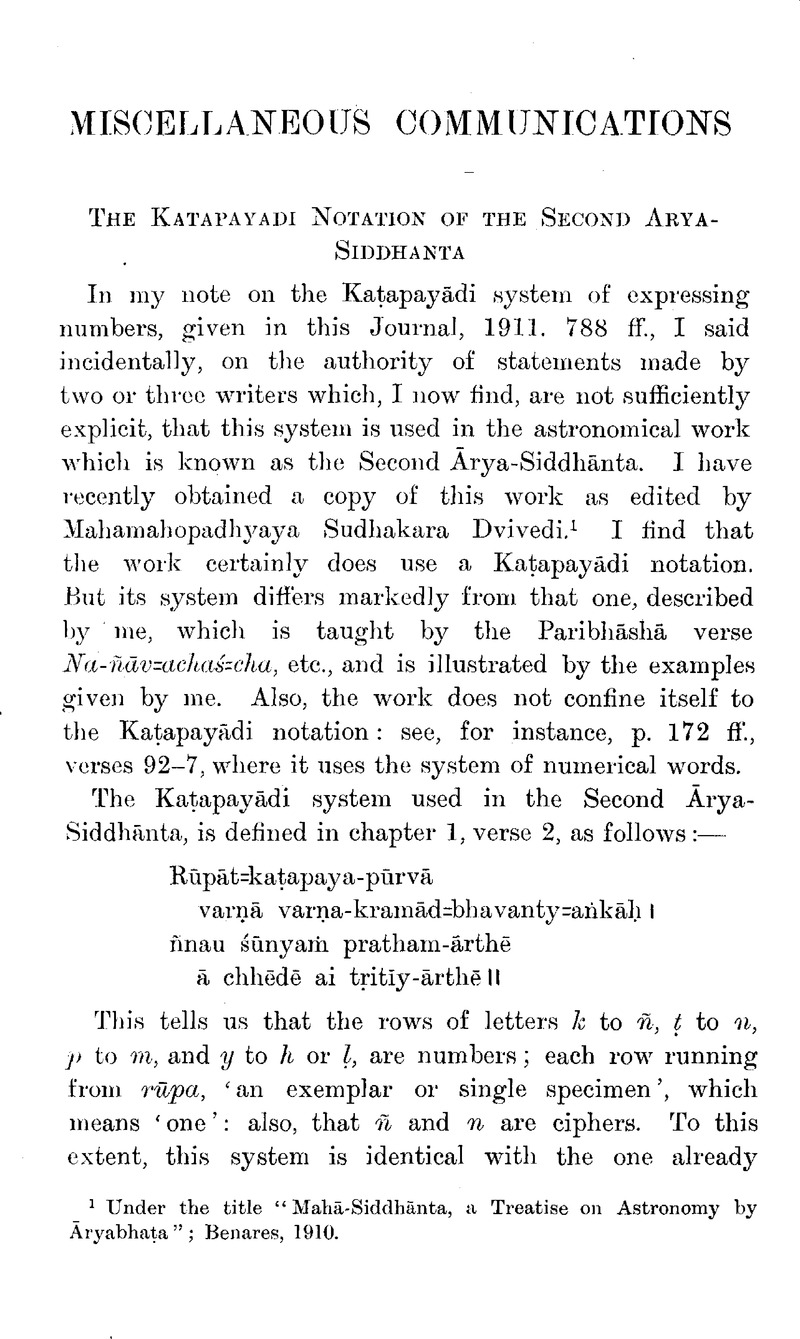No CrossRef data available.
Article contents
The Kaṭapayādi Notation of the Second ārya-Siddhānta
Published online by Cambridge University Press: 15 March 2011
Abstract

- Type
- Miscellaneous Communications
- Information
- Copyright
- Copyright © The Royal Asiatic Society 1912
References
page 459 note 1 Under the title “Mahā-Siddhānta, a Treatise on Astronomy by Āryabhaṭa”; Benares, 1910.
page 461 note 1 Any use of the nomin. plural neuter and the instr. singular is of course barred; because the final ni and na would always give a not wanted cipher.
page 461 note 2 The text has been edited for the most part on these lines. But it seems questionable whether the author wrote on them, and whether the manuscripts follow them. The word chhēdē in the Paribhāshā verse seems to imply that the fall grammatical forms were to be used, and that it was only in analysing the text that the finals in question were to be rejected. The editor has notified no fewer than ten errata in his treatment of the nominative in chapter 1, verses 7, 8, 10, 11, where he has given it as ending in āḥ, and three errata in respect of his treatment of the instrumental in verses 24, 27, where he has given it as ending in aiḥ: and this is suggestive that the manuscripts have the full grammatical forms, and the editor started by following the manuscripts, and then deviated from them in this detail.
page 462 note 1 In the other Kaṭapayādi system the expression īshad-yātē would mean 6160: in this one it might perhaps be interpreted as meaning 6816: but we are still only in the year 5013.




